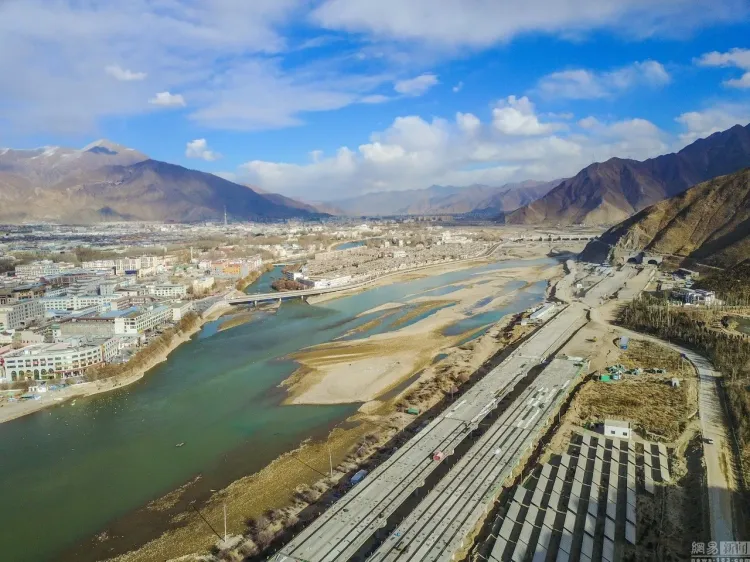Is China’s Green Energy Initiative Endangering Tibet’s Delicate Ecosystem?

Synopsis
Key Takeaways
- China's renewable energy projects threaten Tibetan ecology.
- Local communities suffer human rights violations.
- Massive dam projects pose risks to downstream nations.
- Lithium extraction raises environmental concerns.
- True sustainability requires community involvement.
New Delhi, Oct 17 (NationPress) China’s approach to harnessing the natural resources of Tibet in pursuit of its renewable energy objectives is jeopardizing the delicate balance of the Himalayan ecosystem and undermining the human rights of its impoverished inhabitants, as highlighted by recent articles in The Diplomat and various other outlets.
Tibet serves as the origin for many of Asia's significant rivers, including the Brahmaputra, known in Tibet as the Yarlung Tsangpo, and houses the largest hydropower potential in China. In July, reports indicated that China commenced construction on a massive dam project along the Yarlung Tsangpo River. This ambitious venture entails five new power stations, which are projected to become the largest globally, with a generating capacity that could exceed that of the Three Gorges Dam by threefold.
The development of these dam projects has raised alarming issues for downstream countries such as India and Bangladesh, which fear potential water shortages and severe flooding. Environmentalists and Tibetan advocacy groups have expressed serious concerns regarding the detrimental ecological effects on the already fragile Himalayan ecosystem and the forced displacement of local communities.
The Tibetan plateau is also abundant in vital minerals necessary for modern technology and China's renewable energy sector.
Tibet has become a central point in a 'white gold rush' for lithium, an essential element for electric vehicle batteries and energy storage solutions. Significant lithium deposits have been found in areas governed by China, greatly enhancing the country's global lithium reserves.
By late September, two prominent lithium projects in the Qinghai-Tibet plateau had begun large-scale operations, supplying major global battery manufacturers like Tesla and BYD. Additionally, existing copper and rare earth mines are undergoing expansion.
This mineral extraction has raised concerns about heavy metal pollution in local rivers, threatening downstream ecosystems and the traditional ways of life for Tibetan herdsmen and farmers. Critics argue that local Tibetans derive minimal economic benefits from these initiatives while suffering the impact of environmental degradation.
Moreover, Tibet's elevated altitude and pristine air quality make it an ideal site for solar and wind energy projects.
China has developed some of the largest photovoltaic (PV) and wind power infrastructures on the Tibetan plateau, capitalizing on the abundant sunlight and wind resources. Analysts view the scale and sophistication of this development as a strategic maneuver to utilize Tibet's energy resources, which may carry military and ecological repercussions.
The rapid pace of industrialization in Tibet has sparked significant environmental and ethical dilemmas. The Tibetan Plateau, often referred to as the 'Third Pole' and 'Water Tower of Asia,' is experiencing warming at a rate twice the global average, rendering it one of the most climate-sensitive areas on the planet. Large-scale mining and dam construction are likely to exacerbate soil erosion, water pollution, and the loss of biodiversity.
Local opposition to these projects has been met with repression. The Diplomat reported the case of Tsongon Tsering, who was detained in October 2024 after documenting environmental damage caused by mining activities. His arrest highlights how dissent regarding environmental destruction is silenced under the pretext of development and national security.
The Diplomat underscores that as the world moves towards net-zero emissions, the situation in Tibet illustrates that sustainability cannot be attained through environmental devastation or the suppression of human rights. A genuine green transition must encompass environmental protection, transparency, and community involvement.









